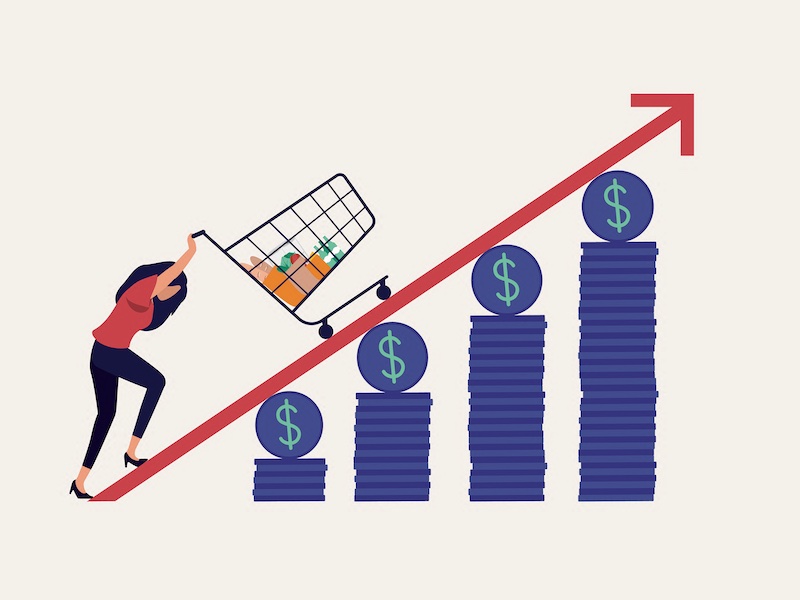
As inflation inches closer to 3%, economists are warning the steady monthly declines in annual price growth will stall and even potentially reverse in the second half of the year.
Statistics Canada is set to release its consumer price index report for June next week, and forecasters are anticipating the annual inflation rate fell from 3.4% in May.
“We’re expecting a deceleration to 3% year-over-year. And that’s really mainly because the gasoline prices we’re paying today are being compared with the very peaks of what we saw last year,” said Andrew Grantham, an executive director of economics at CIBC.
But inflation isn’t expected to fall much further this year, making the journey back to the 2% target a long and tumultuous one.
Desjardins chief economist Jimmy Jean says the upcoming CPI report marks a turning point in the fight against inflation.
“June is going to be really the peak disinflationary force coming from gasoline, in our view. So, I think once we’re past that, we’re going to see that it is going to take quite a long time before we get inflation to a place that we’re happy with,” Jean said.
The rapid deceleration in inflation since last summer has been largely due to base-year effects, which refer to the impact of price movements from a year ago on the calculation of the year-over-year inflation rate.
Simply put, it means prices weren’t rising as fast this year because they were being compared to already elevated prices a year prior.
On Wednesday, the Bank of Canada raised its key interest rate by a quarter of a percentage point in part because it expects inflation to remain high for longer.
It released new projections that suggest inflation will return to target in mid-2025. That’s six months longer than the central bank previously forecast.
The central bank said its upward revision to its inflation forecast is due to “excess demand” in the economy, higher-than-expected housing prices and higher than expected goods prices.
The Bank of Canada’s key interest rate now sits at 5% and it hasn’t ruled out further rate hikes if needed.
Grantham says CIBC’s forecast for inflation in the coming months is in line with the Bank of Canada and warns inflation may even tick up in some months.
Economists tracking changes to price growth note that core measures of inflation, which strip out volatility, have not fallen by much in recent months.
That’s led the central bank to raise rates, even as inflation appears on the surface to be easing.
“Where our forecasts differ more from the Bank of Canada’s, is what happens after that,” he said.
“We actually think that inflation will return to 2% by the second half of next year.”
That’s because there are signs of softening in the economy, he said, as well as more improvements in supply chains.
Canada’s labour market has begun to ease as the unemployment rate rises and wage growth slows. And data from Statistics Canada shows the rate at which households are saving is on the decline.
Part of the Bank of Canada’s hawkishness, though, appears to be driven by the housing market, which rebounded this year despite high interest rates.
“The housing market has seen some pickup. New construction and real estate listings are lagging demand, which is adding pressure to prices,” the Bank of Canada said in its press release announcing the latest rate hike.
Jean said the last two rate increases are shifting sentiment in many housing markets, though rapid population growth is blunting the effect interest rate increases have on housing demands.
The rapid rise in interest rates has eroded housing affordability, as mortgage interest costs skyrocket for new homebuyers and existing homeowners with variable rate mortgages.
In May, Statistics Canada’s mortgage interest cost index jumped 29.9%, the fastest rise on record.
Mortgage interest costs are also ironically driving up inflation.
Excluding mortgage interest costs, prices actually rose by only 2.5% year-over-year in May, well within the Bank of Canada’s targeting range.
Grantham says some of the core measures of inflation that the Bank of Canada tracks exclude these costs, which he says make sense.
“Every time you hike interest rates, if everything else stayed equal, inflation would actually accelerate,” Grantham said.
“So it doesn’t necessarily make a ton of sense from an inflation-targeting central Bank’s point of view, to include those costs.”